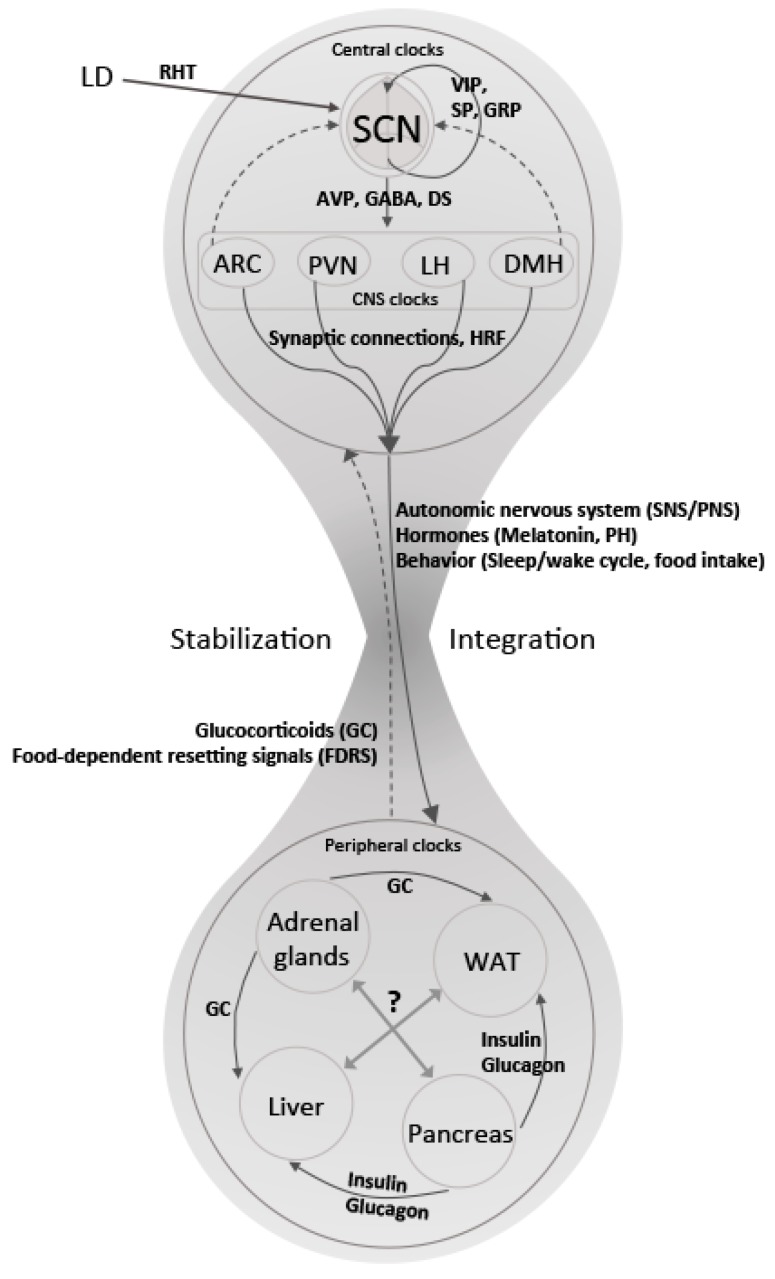Figure 1.
Represents pathways and signals involved in clock-to-clock communication responsible for the integration and stabilization of biological rhythms at central and peripheral levels. The suprachiasmatic nuclei (SCN) receive light information (LD) from the retina as photic input via the retinohypothalamic tract (RHT). The neurons in the SCN are organized as a coupled network of neuronal connections communicating through several neurotransmitters (Vasoactive intestinal peptide (VIP), Substance P (SP), Gastrin releasing peptide (GRP), etc.). The temporal information is then conveyed through Vasopressin (AVP), gamma-aminobutyic acid (GABA) and diffusible signals to other clocks in the brain such as ARC (arcuate nucleus), PVN (paraventricular nucleus), LH (lateral hypothalamus), DMH (dorsomedial hypothalamic nucleus), among others. An integrated response is translated from the brain, through neural projections from the autonomic nervous system and humoral signals, to peripheral tissues (solid arrows). Peripheral clocks receive the time information, communicate with each other and release signals that feed-back (dotted arrows) to the clocks in the brain. The cooperation between central and peripheral clocks results in the stabilization of the rhythms that finally regulate tissue physiology in synchrony with external time.

